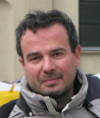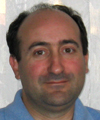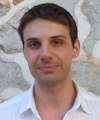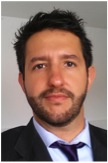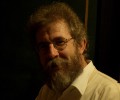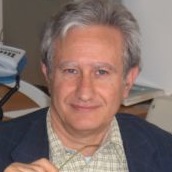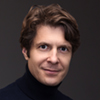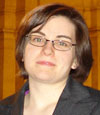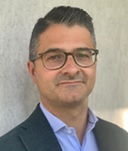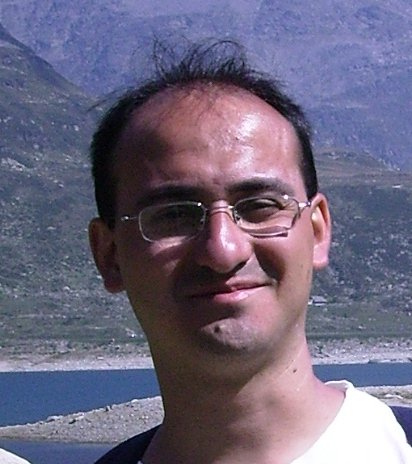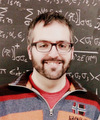Studying at the University of Verona
Here you can find information on the organisational aspects of the Programme, lecture timetables, learning activities and useful contact details for your time at the University, from enrolment to graduation.
Academic calendar
The academic calendar shows the deadlines and scheduled events that are relevant to students, teaching and technical-administrative staff of the University. Public holidays and University closures are also indicated. The academic year normally begins on 1 October each year and ends on 30 September of the following year.
Course calendar
The Academic Calendar sets out the degree programme lecture and exam timetables, as well as the relevant university closure dates..
| Period | From | To |
|---|---|---|
| I sem. | Oct 2, 2017 | Jan 31, 2018 |
| II sem. | Mar 1, 2018 | Jun 15, 2018 |
| Session | From | To |
|---|---|---|
| Sessione invernale d'esame | Feb 1, 2018 | Feb 28, 2018 |
| Sessione estiva d'esame | Jun 18, 2018 | Jul 31, 2018 |
| Sessione autunnale d'esame | Sep 3, 2018 | Sep 28, 2018 |
| Session | From | To |
|---|---|---|
| Sessione di laurea estiva | Jul 18, 2018 | Jul 18, 2018 |
| Sessione di laurea autunnale | Nov 22, 2018 | Nov 22, 2018 |
| Sessione di laurea invernale | Mar 20, 2019 | Mar 20, 2019 |
| Period | From | To |
|---|---|---|
| Christmas break | Dec 22, 2017 | Jan 7, 2018 |
| Easter break | Mar 30, 2018 | Apr 3, 2018 |
| Patron Saint Day | May 21, 2018 | May 21, 2018 |
| Vacanze estive | Aug 6, 2018 | Aug 19, 2018 |
Exam calendar
Exam dates and rounds are managed by the relevant Science and Engineering Teaching and Student Services Unit.
To view all the exam sessions available, please use the Exam dashboard on ESSE3.
If you forgot your login details or have problems logging in, please contact the relevant IT HelpDesk, or check the login details recovery web page.
Should you have any doubts or questions, please check the Enrollment FAQs
Academic staff
 alberto.benvegnu@univr.it
alberto.benvegnu@univr.it
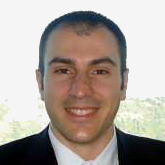
Bloisi Domenico Daniele
 domenico.bloisi@univr.it
domenico.bloisi@univr.it
 maurizio.boscaini@univr.it
maurizio.boscaini@univr.it
 federico.busato@univr.it
federico.busato@univr.it
 bruno.gobbi@univr.it
bruno.gobbi@univr.it
Ugolini Simone
 simone.ugolini@univr.it
simone.ugolini@univr.it
Study Plan
The Study Plan includes all modules, teaching and learning activities that each student will need to undertake during their time at the University.
Please select your Study Plan based on your enrollment year.
1° Year
| Modules | Credits | TAF | SSD |
|---|
2° Year activated in the A.Y. 2018/2019
| Modules | Credits | TAF | SSD |
|---|
3° Year activated in the A.Y. 2019/2020
| Modules | Credits | TAF | SSD |
|---|
One course to be chosen among the following2 courses to be chosen among the following| Modules | Credits | TAF | SSD |
|---|
| Modules | Credits | TAF | SSD |
|---|
| Modules | Credits | TAF | SSD |
|---|
One course to be chosen among the following2 courses to be chosen among the followingLegend | Type of training activity (TTA)
TAF (Type of Educational Activity) All courses and activities are classified into different types of educational activities, indicated by a letter.
Type D and Type F activities
Modules not yet included
Introduction to Programming (2017/2018)
The teaching is organized as follows:
Learning outcomes
------------------------
MM: PROGRAMMAZIONE PER BIOINFORMATICA
------------------------
The aim of this course is to introduce the students to structured programming by using the C programming language. At the end of the course, students will be able to write and understand simple C programs.
------------------------
MM: LABORATORIO DI PROGRAMMAZIONE I
------------------------
The aim of this module is to let students develop code in structured programming style, by using the C programming language. At the end of the module, students will be able to use tools for editing and compilation, in order to implement simple C programs.
Program
------------------------
MM: PROGRAMMAZIONE PER BIOINFORMATICA
------------------------
Introduction to computers and programming Algorithms and structured programming Flow control structures Functions and the concept of abstraction Arrays and pointers Characters and strings Formatted Input/Output Structures, unions, bit manipulations Lists, trees, stacks and queues and their implementation. File processing Preprocessor
------------------------
MM: LABORATORIO DI PROGRAMMAZIONE I
------------------------
Introduction to computers and programming Algorithms and structured programming Flow control structures Functions and the concept of abstraction Arrays and pointers Characters and strings Formatted Input/Output Structures, unions, bit manipulations Lists, trees, stacks and queues and their implementation. File processing Preprocessor
Bibliography
| Author | Title | Publishing house | Year | ISBN | Notes |
|---|---|---|---|---|---|
| Al Kelley, Ira Pohl | C Didattica e Programmazione | Pearsons Education Italia | 2004 | 8871922190 |
Examination Methods
The exam is shared between the modules of theory and laboratory. The global exam is split in two parts, at the end of the first and second term. Both parts consist in writing, on paper, small C programs, about the concepts introduce in the relative term. The evaluation will be up to 30 points and will be based on the syntactical and semantic correctness of the code. The final mark will be the average of both parts.
Career prospects
Module/Programme news
News for students
There you will find information, resources and services useful during your time at the University (Student’s exam record, your study plan on ESSE3, Distance Learning courses, university email account, office forms, administrative procedures, etc.). You can log into MyUnivr with your GIA login details: only in this way will you be able to receive notification of all the notices from your teachers and your secretariat via email and soon also via the Univr app.
Graduation
List of theses and work experience proposals
| Stage | Research area |
|---|---|
| Correlated mutations | Various topics |
Attendance
As stated in the Teaching Regulations for the A.Y. 2022/2023, attendance at the course of study is not mandatory.

 +39 045 802 7072
+39 045 802 7072
